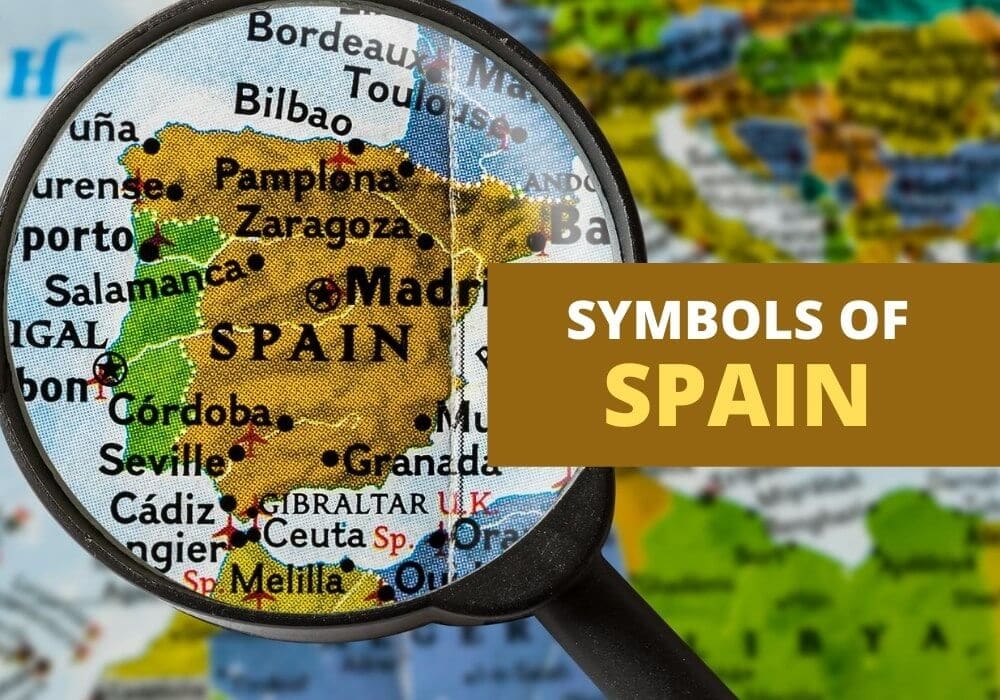
Table of Contents
Spain, officially called the ‘Kingdom of Spain’ is a European country located on the Iberian Peninsula. There are many symbols that make up a big part of the traditional Spanish culture and while some are more common or noticeable than others, each one has a historical or emotional significance. Let’s take a quick look at some of the fascinating symbols of Spain, both official and unofficial.
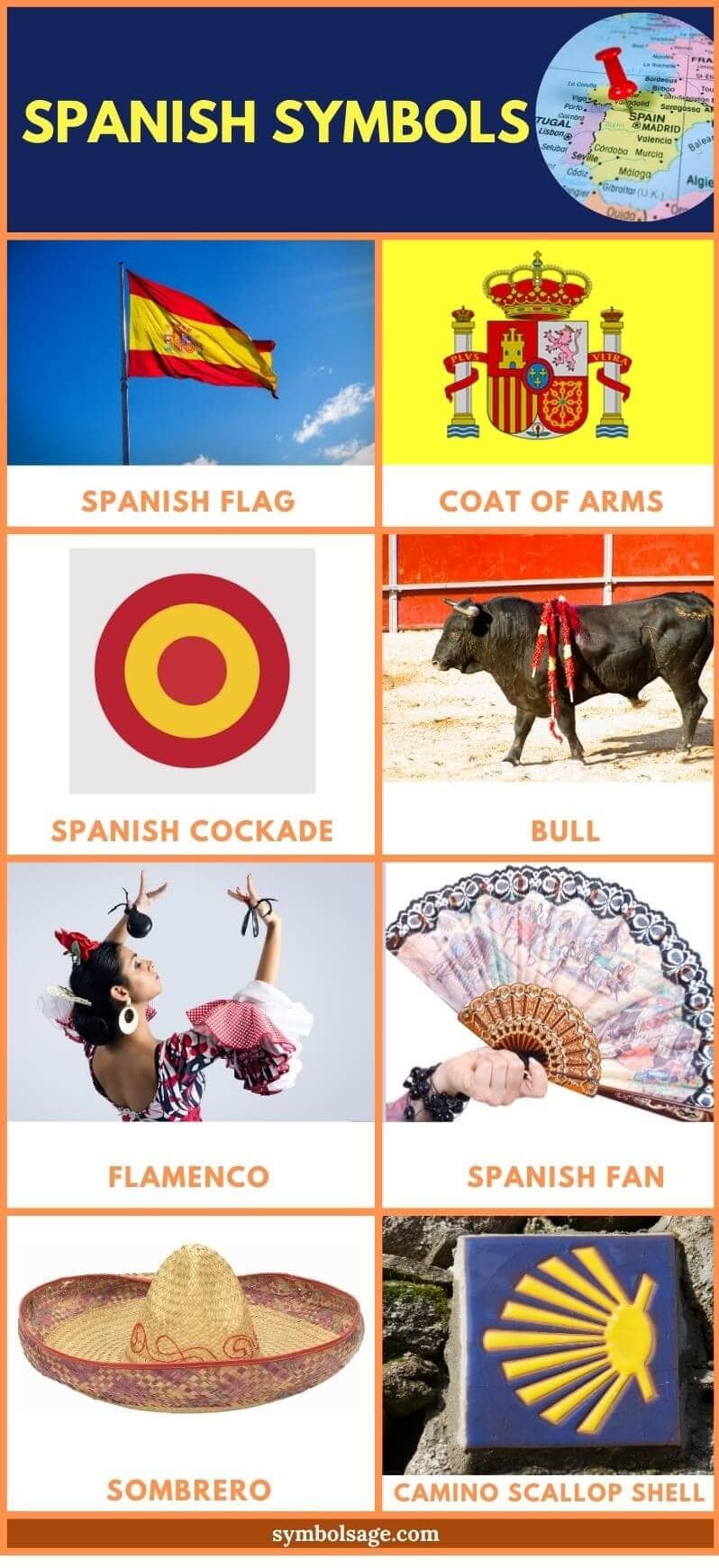
National Symbols of Spain
- National Day: 12th October
- National Anthem: La Marcha Real (The Royal March)
- National Currency: Euro
- National Colors: Red and yellow
- National Tree: Evergreen oak
- National Flower: Red carnation
- National Animal: Bull
- National Bird: Short-toed eagle
- National Dish: Paella
- National Sweet: Flan
The Flag of Spain
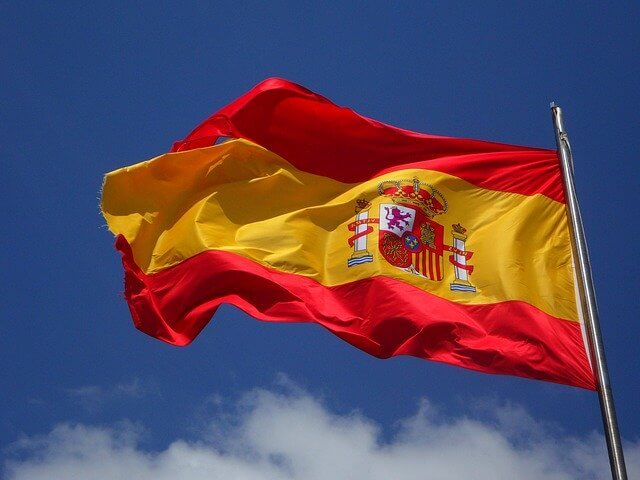
The national Flag of Spain consists of three stripes arranged horizontally. The yellow middle stripe is twice the width of the top and bottom red stripes. On the left side of the yellow stripe is the coat of arms of Spain. It’s said that the colors of the flag were chosen to represent bullfighting, one of the most famous of Spanish traditions. While yellow represents the sand in the bullfighting arena, red stands for the blood spilled by bulls during the fight.
The current flag of Spain was designed in 1785 and is now flown from public buildings, businesses, private homes, ships or even during official ceremonies. Although it’s meant to be flown from sunrise to sunset, most government offices fly it on a 24-hour basis.
The Coat of Arms
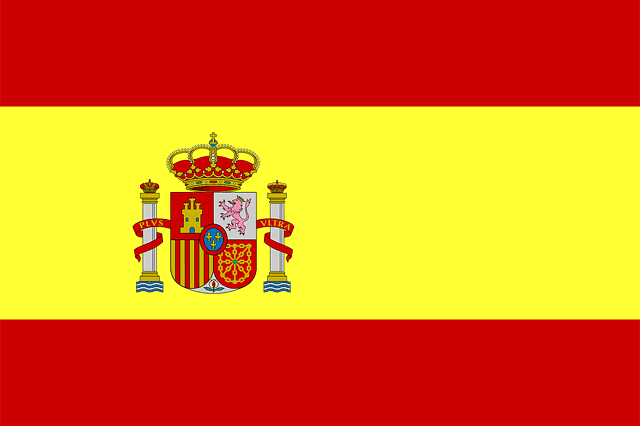
The Spanish coat of arms is a national symbol that represents Spain as a country and a nation, including its form of government and national sovereignty.
On either side of the coat of arms are the Pillars of Hercules, said to represent the Strait of Gibraltar. The ribbon in the middle states the Spanish Motto: ‘Plus Ultra’ which means ‘further beyond’. Between the two columns is a shield made up of six different parts. These are the arms of the medieval kingdoms which united to form Spain back in the 15th century. Located right in the middle is a circle with 3 fleurs de lis, representative of the House of Bourbon. Lastly, the Royal Crown can be seen on the top, symbolizing the Crown of Spain.
The Spanish coat of arms is present on the national flag of Spain. After the country made the transition to democracy in 1981, it was approved by the law as the official coat of arms.
The Cockade of Spain

One of Spain’s national symbols, the Cockade of Spain came into existence after the French revolution and was made by pleating a golden pin over a red ribbon in a circle. Its colors are the those of the Royal Bend of Castille, the heraldic flag of the Crown of Castille, and now symbolize the colors seen on the Spanish Flag.
The cockade was on the headgear of Spanish soldiers in the 1700s. It meant a lot more to the soldiers than just a national identity. In fact, it was the embodiment of the heart of those who wore it. It symbolized everything for which the soldiers fought and was one of the most prized souvenirs. The cockade is currently not used in Spain except to identify the Spanish Armed Forces aircraft.
The Spanish Bull
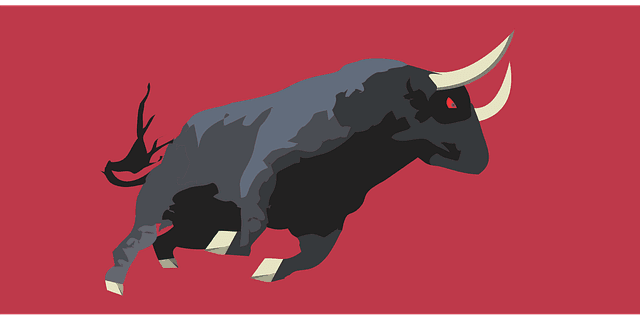
Throughout history, the Osborne bull has been seen as the unofficial symbol of Spain, representing the virtues and values of the country and its culture. It came about as an advertisement for ‘Brandy de Jerez’ by the Osborne Sherry Company who began to put up these bulls by major roads all over the country. Over the years, the bulls gained cultural or aesthetic significance and now they’re a part of the artistic and cultural heritage of Spain.
The Iberians were the very first inhabitants of Spain and they idolized the bull which was a highly important figure in their mythology. In Iberian culture, the bull was viewed as a mythological god. Bullfighting was a religious drama in which a God is sacrificed for the salvation of humanity. Even today, it’s a symbol of pride to the Spanish and is found everywhere on key rings, t-shirts or car stickers used throughout Spain and the rest of the world.
Flamenco
The Flamenco is an extremely difficult type of art that transmits passion in three different components: music, dance and song. It represents a certain way of interpreting and perceiving life. Flamenco is typically associated with Spain since it first originated in Andalusia (southern Spain).
During the dictatorship of Franco, flamenco had a dual role to play. Its first role was the embodiment of rebellion and was used against the regime. Flamenco protest songs were quite common throughout the ‘60s. On the other hand, the regiment adopted it as one of the pillars that represented Spanish culture.
The Andalusian people recognize flamenco as a powerful form of storytelling which have been passed down through many generations. Even today, it’s practiced not only in Spain but all around the world.
The Spanish Fan
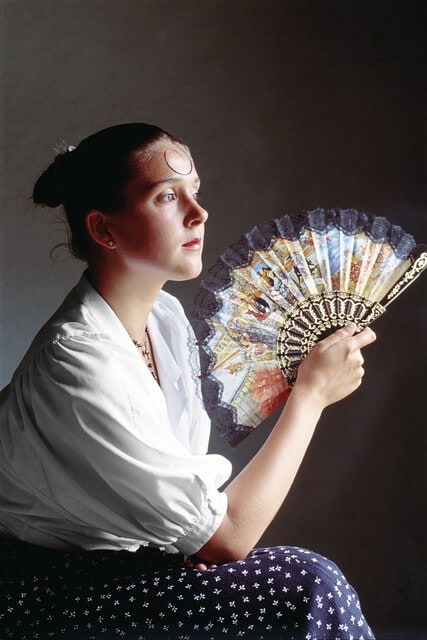
Known as the ‘pericon’ in Spanish, the Spanish fan remains one of the most famous and used accessories around the world. The fan is mostly used for flamenco dancing because of its large size as well as for lessons and performances. The reason it’s so popular is because of its elegance, colorfulness and the diversity that it gives dance choreographies.
The Spanish fan has a language of its own developed by the senoritas in the 19th century. Those who were always chaperoned found it impossible to speak to their prospective beau in secret, so they used their fans as a means of communicating without words. For example, giving the fan to the beau was a way of saying ‘I’m yours’ and carrying a closed fan in the left hand meant ‘I’m available and on the lookout’.
Today, the Spanish fan remains a cultural symbol of Spain that exudes passion and romance as well as being one of the most used accessories in the world.
The Sombrero
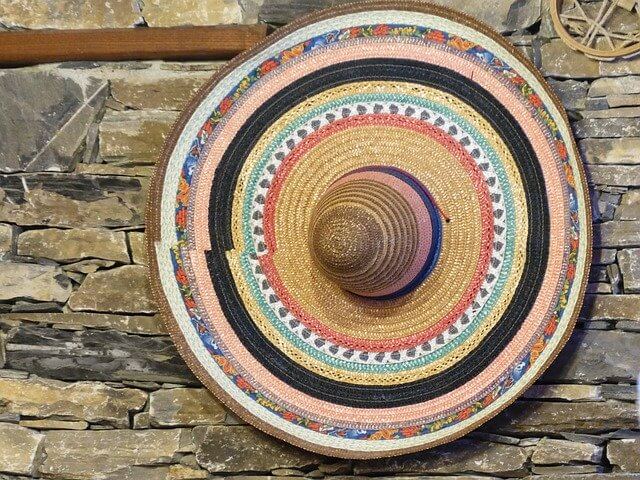
Although the sombrero is a part of Spanish culture, it’s believed to have originated in Mexico. However, its exact origin remains unknown. Sombreros are made from straw in a variety of different colors. They have a huge brim and are far too impractical and heavy for workers to use so they’re most often worn by Mexican folk musicians, known as the mariachi.
At one point, sombreros reflected the economic and social status of the person who wore them, so the taller the cone and the wider its brim, the higher the wearer’s status. According to Mexican folk songs, if the wearer of a sombrero wanted to express his love for someone and show them that he was ready to seal the deal, he would throw his sombrero on the floor. This was a way of expressing willingness to sacrifice one’s most valuable possessions for love.
The Camino Scallop Shell
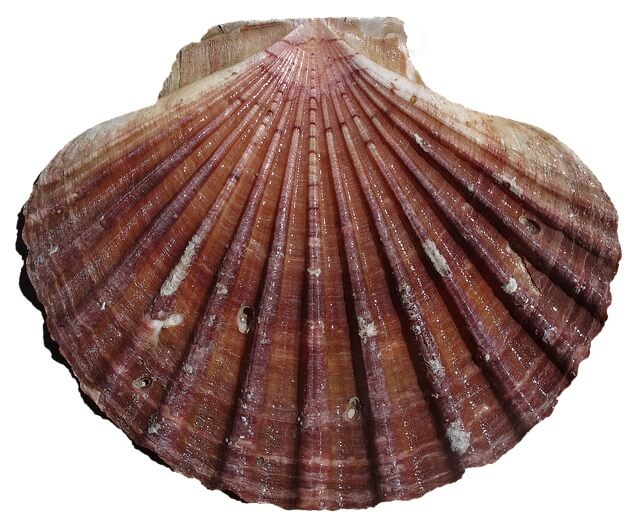
Camino scallop shell is one of the most popular icons and well-known symbols associated with Camino de Santiago, a pilgrimage to the shrine of St. James. Throughout history, the scallop shell has been used by pilgrims on their journey as a symbol of their pilgrimage and a guide which led them in the right direction.
The shell made a great companion as well as a practical item for the pilgrims who used it as a cup to drink water from streams and springs as they went along their way. The pilgrims would also wear it on their backs or around their necks to make it easier for others to identify them as pilgrims and to assure them that they were on the correct path.
Camino shells are still very popular among pilgrims and many people all over the world continue to purchase and keep them as accessories or souvenirs.
Wrapping Up…
Not surprisingly, Spanish symbols are still extremely popular not only in Spain but in other parts of the world as well. While there are many more symbols out there, we’ve only discussed some of the most common ones, each with its own unique story.








